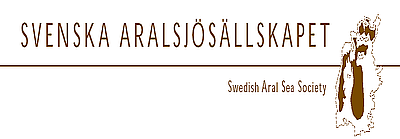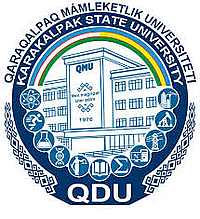Chapter 10: Economy and Sustainable Development
10a.
Economy and ecology – a single system
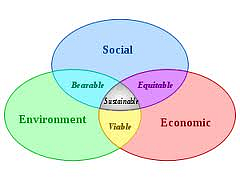 Economy is regularly defined as one of the (three) pillars, or dimensions, of sustainable development - Environmental, Social and Economic - all of which need to work to achieve a sustainable society. While environmental concerns have dominated the discussion for a long time we now see a change. Increasingly the language of sustainability comes closer to that spoken by politicians and businessmen. People start to realize that environmental issues need to be seen in a much broader perspective than before. They are not just a matter of environmental protection, but also a matter of long-term economic strategies. Below we will illustrate how economy is connected to environmental development but also how it influences the social situation of a country.
Economy is regularly defined as one of the (three) pillars, or dimensions, of sustainable development - Environmental, Social and Economic - all of which need to work to achieve a sustainable society. While environmental concerns have dominated the discussion for a long time we now see a change. Increasingly the language of sustainability comes closer to that spoken by politicians and businessmen. People start to realize that environmental issues need to be seen in a much broader perspective than before. They are not just a matter of environmental protection, but also a matter of long-term economic strategies. Below we will illustrate how economy is connected to environmental development but also how it influences the social situation of a country.
The science of ecological economics attempts to study economy, the environment and natural resources together. It is obvious that economy depends on natural resources and those in turn depends on how the economy - e.g. forestry or agriculture or industrial production, which may lead to pollution - is conducted. Society, economy and nature together form a single system, in which all components influence each other.
Many environmental goods are traded on a market just as any other goods. Timber, agricultural products, mined metals and fossil resources are traded and have prices, and are thus part of the normal economy. When this trade have negative effects, which are not paid for - it may be both environmental and social negative effects - these are called externalities. Typical externalities include pollution by factories, roads that intrude in the landscape, and carbon dioxide emissions from transport e.g. air traffic. Pollution may decrease the health of the people leading to higher medical costs, or reduce the production of nature and thus lower the income from forests, fields and the sea.
When the price of a product does not represent its true costs we have a market failure. Market economy does not automatically take care of the environmental costs of the economy. In fact it never does as “free” ecosystems services are supporting all activities in the system Nature-Economy. The value of all ecosystems services on Earth has been estimated and the result is much larger than the value of the total economy, that is, the world Gross Domestic Product, GDP.
One way to deal with this is that the State introduces an environmental tax. In this way an externality may be included or even avoided, for example when a factory finds it economically better to develop a production without pollution. The State may also use the tax money to restore the environment, for example when a tax on e.g. emissions of air pollutants such as SOx is used for the liming of acidified lakes.
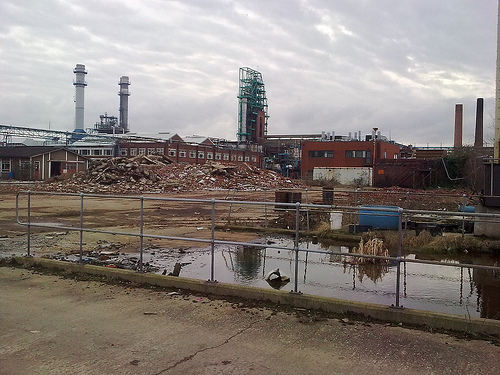 An environmental tax that makes the polluter pay at least some of the cost of polluting, is fulfilling the so-called Polluters Pay Principle, meaning that those who pollute should pay for the damage caused, most typically for the cost of remediation. In real life it is often difficult or impossible to find the polluter, e.g. when a country is hit by acid rain. Instead too often it is the victim who pays. Today we are fighting to remedy quite much of the consequences of earlier environmental sins, e.g. by remediation of brown fields. Those are much polluted earlier industrial areas, which are often extremely expensive to clean up. This is the environmental debt of earlier generations.
An environmental tax that makes the polluter pay at least some of the cost of polluting, is fulfilling the so-called Polluters Pay Principle, meaning that those who pollute should pay for the damage caused, most typically for the cost of remediation. In real life it is often difficult or impossible to find the polluter, e.g. when a country is hit by acid rain. Instead too often it is the victim who pays. Today we are fighting to remedy quite much of the consequences of earlier environmental sins, e.g. by remediation of brown fields. Those are much polluted earlier industrial areas, which are often extremely expensive to clean up. This is the environmental debt of earlier generations.
But what about environmental goods and services which are never sold and bought on a market? Can they be given a price? Sometimes a price can be calculated as an indirect cost. Thus the prices of all properties at the shore of a sea before and after it has been polluted reflects the price of a clean sea. In absence of a market price one may simply ask people what they are willing to pay (willingness to pay, WTP method), for example for the possibility to pick mushrooms in the forest, or to be able to swim in a nearby lake.
There are also services, which do not have a price, that are priceless, such as the beauty of a mountain range or the existence of the biodiversity of a coral reef, they have existence value. It is also obvious that monetary methods have limits. We have to preserve the basis for our lives regardless of what the market says. “When the last tree is cut, the last fish is eaten, it will be obvious that we cannot eat money.”
When asking who owns the environment, the answer above is “the state”, as the state is able to collect environmental tax. Sometimes this does not apply. The World’s Oceans for example do not have an owner in this sense. Therefore fishing fleets may harvest as much fish as they can, not to let someone else do it. As a consequence the resource is partly or completely destroyed, a reality of today’s ocean fishing. This is called the tragedy of the commons. An unregulated common resource is at danger. We see national states regulating their common resources, and some international regulations, e.g. fishing within the European Union waters, but the so called global commons – Antarctica, the oceans, the atmosphere - are in danger. Global warming can be seen as the failure to regulate the use of the atmosphere as a recipient for greenhouse gases.
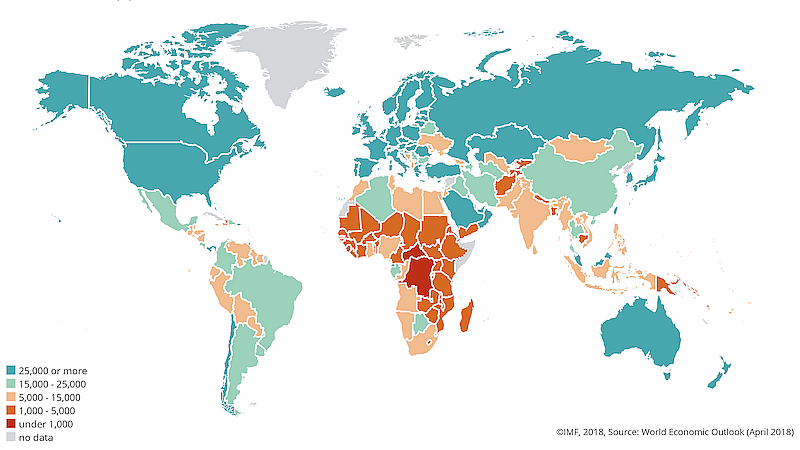
The environment is thus valuable, but where is the wealth of nations? The collected value of all goods and services sold and bought in a nation is traditionally expressed as Gross National Product, GNP. The weakness is that it includes transactions, which are not understood as wealth, such as health services, and excludes others, which are percieved as wealth, such as natural resources. These are included in a green GNP and green budgets. The absolute value of a green GNP is not possible to establish. The large value of working with a green budget or green GNP is rather to follow the changes from one year to the next. Green budgets include traditional statistics (production values, processing value, employment), but also adds positive items (energy as biomass etc, and natural resources such as forests, fisheries etc) and subtract negative ones, such as emissions. The World Bank, which in this way has reported on the wealth of nations, emphasise the importance of agriculture, especially in the developing world.
But equally important as the wealth of nations is the distribution of wealth. The economic inequity between, as well as within, countries has typically increased since the 1970s. Large income inequalities are by many considered a problem as serious as the environmental crisis. A country with large personal income inequalities has larger problems in medical and psychological health, crime, gender equity, social trust etc. In Europe a key task for the welfare state is to function as a huge re-distributor of income to reduce inequity by collecting taxes and supporting those without income. (See further Chapter 10c).
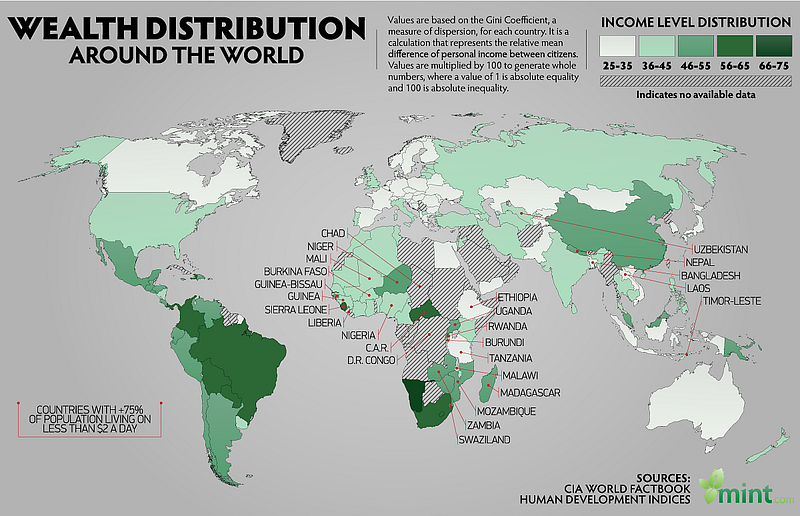
We see that many countries, especially in Asia, which a generation back was considered developing or underdeveloped, are today counted as middle-income states. Especially in Asia the economic development has been dramatic. Still there are a number of countries, most of them in Africa, with enormous poverty. The redistribution of economic means to these through e.g. loans, development support etc., is minimal compared to for example international trade or military budgets. The United Nations asked the countries of the world to address this question in the Millennium Development Goals adopted by the General Assembly in year 2000 to be reached by 2015. Reducing poverty is one of the goals; it will be met by the target year. It will help to meet a number of other key development goals both social (child survival, education, population growth) and environmental (food production, resource use and environmental impact).
One finally needs to reflect on the meaning of economy. Money is there not for its own sake, but rather as a mean to achieve welfare and a good life. Is there enough for us to share (equity within the existing generation) and save for the coming generations (equity between generations)?
Materials for session 10a
Basic level
- Study Environmental Science, chapter 19: The Cost of Pollution - Environmental Economics, pages 569 - 574: Basics of Ecological Economics.
- Study Environmental Science, chapter 19: The Cost of Pollution - Environmental Economics, pages 574 - 579: Cost of environmental impact and green budgets.
- Study Environmental Science, chapter 19: The Cost of Pollution - Environmental Economics, pages 583 - 589: Environmental taxes.
Medium level (widening)
- Study how to perform Green Accounting, by Geir B. Asheim.
- Learn about different measure of economic standard (e.g. GDP/Capita), wealth distribution (Gini coefficient or quintiles)
- Read about the book The Spirit Level on social consequence of unequal distribution of wealth
- Study distribution of wealth in your own country.
- Watch the presentation by Elinor Ostrom on Tragedy of the Commons.
- Read Raymond De Young’s Tragedy of the Commons, Adaptive Muddling and Durable Behaviour: Bringing out the best in people faced with difficult environmental circumstances.
- Hans Rosling: New insights on poverty.
Advanced level (deepening)
- Read Environmental Science, chapter 19: The Cost of Pollution - Environmental Economics, pages 569 - 589: The Cost of Pollution - Environmental Economics.
- Study The Sustainable Development Goals; Find out what they are and how far they are from being reached. On the UNDP web site (first). On the Sustainable Development Goals (SDG) homepage (second).
- Study the World Bank report Where is the Wealth of Nations. Find out how it is calculated and look up your own country in the tables in the back.
- Read Chapters 9 and 10, pages 1- 47 in: Branko Milanovic (2005), Worlds Apart: Measuring Global and International Inequality.
References
Milanovic, B. 2005. Worlds Apart: Measuring International and Global Inequality. Princetone University Press.
Rydén, L., Migula, P. and M. Andersson (eds). 2003. Environmental Science - understanding, protecting and managing the environment in the Baltic Sea region. Baltic University Press. Uppsala, Sweden.
Wilkinson, R. G. and Pickett, K. 2009. The Spirit Level: Why More Equal Societies Almost Always Do Better. Allen Lane.
World Bank. 2005. Where Is the Wealth of Nations? Measuring Capital for the XXI Century. The International Bank for Reconstruction and Development / The World Bank, Washington, D.C.
Zylicz, T. (ed.). 1977. A Sustainable Baltic Region. Session 8, pp. 23-29. Baltic University Press. Uppsala, Sweden.
BUP Sustainable Development Course
10b.
The dilemma of economic growth
We live in a society in which economic growth has become a mantra for all policymakers and business people. Even if the overwhelming focus on growth is only some 30 years, the history of economic growth is long. Only during the 20th century, global GNP increased 16 times, see Chapter 1a. Among the several factors behind growth, energy stands out as the most important. The access to cheap fossil fuel is closely linked to economic growth during over a long period. Easy access to energy made labour productivity rise by some 3-4 % yearly over more than a century. A person equipped with a machine can do much more than when just using muscle power!
But where does a never ending economic growth take us? Suppose that all inhabitants should have the standard of living typical for Western Europe (or OECD countries). This means another 15 times increase, and by the end of the century after further growth a 40 times bigger economy in the world. Is this possible? Can growth go on forever – still growth is the basis of present modern economy.
Not surprising when thinking about what happens if there is no growth. Consumption would decrease, companies would not be able to sell their products and would go to bankruptcy, unemployment would mount and so on. The “engine of growth” in market economies allows companies to gain a net profit, which is invested in a development that leads to more growth and jobs. In short, it seems like modern economy has to choose between eternal growth and collapse, both of which are unsustainable. The growth dilemma may be the largest problem for the vision of a sustainable future society.
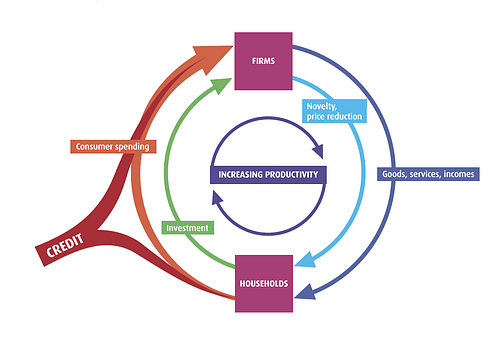
It is clear that economic growth is crucial up to a point for quality of life, happiness, prosperity, education, health etc. But after that, it appears that economic growth is not so important. In international studies, life expectancy, infant mortality, education, or happiness itself do not increase after a GDP of about 10,000 USD/capita (purchasing power parity using 1995 dollars). In investigations one finds that factors which are important to individual satisfaction and wellbeing do not cost much or cannot be bought at all, such as family, friends, leisure time, enjoying nature etc. Increased income, however, is still a priority in all societies. Why do people rather get richer than happier?
To come to grips with the growth dilemma, we need to ask ourselves which is the role of material possessions. One important aspect is that in society, we tend to judge our prosperity by comparison with others. As long as we are enough equal to our neighbours all is fine, but if they have a better car or even two cars or a nicer house etc. we want the same. Social positioning is the engine of personal ambition and is also fuelling economic growth. It is the social logic behind increased consumption, which the companies need, to develop their businesses, increase profit and – grow!
If economic growth could be unrelated to flows of natural resources, the growth would not be problematic. It could go on forever as long as material consumption does not increase. Increased economy without increasing material flows is called decoupling. Decoupling has been typical for affluent societies, in the sense that economy is growing faster than consumption of resources. The productivity of for example 1 unit of energy (energy intensity) has increased for many years in western societies. But the result of decoupling is offset by an absolute increase in growth, called the rebound effect. We talk about Jevons paradox, meaning that technological progress or efficiency increase, typically leads to increased consumption. We thus have a relative decoupling. On the other hand, absolute decoupling – that the material flow is actually decreasing, while economic growth is increasing – is not seen in our societies.
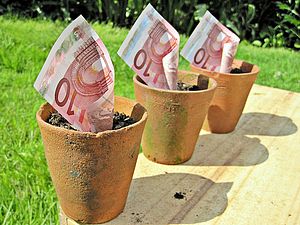 What kind of solutions do we see for the growth dilemma? One is to dematerialize the economy, that is, an ever-increasing economic value can be given to smaller material things. For example, computers may be quite small and still be very efficient, or that we buy services, for example concerts, much more than material possessions. Much of this has happened. In a modern society, a large proportion of the economy is in the service sector (in Sweden, only about 15% of the workforce is in industry and less than 2% in agriculture and forestry). The efficiency of the production is thus enormous (or relies on imported goods) but it is still offset by increased consumption, and we do not see absolute decoupling.
What kind of solutions do we see for the growth dilemma? One is to dematerialize the economy, that is, an ever-increasing economic value can be given to smaller material things. For example, computers may be quite small and still be very efficient, or that we buy services, for example concerts, much more than material possessions. Much of this has happened. In a modern society, a large proportion of the economy is in the service sector (in Sweden, only about 15% of the workforce is in industry and less than 2% in agriculture and forestry). The efficiency of the production is thus enormous (or relies on imported goods) but it is still offset by increased consumption, and we do not see absolute decoupling.
Another road is green growth. This was a main theme at the 2012 Rio + 20 Conference. Green economy in short only refers to an economy where environmental concerns are taken into account. Here, one component is that material flows become cyclic (recycle all components of products) so that they do not contribute to resource extraction or environmental loads. The economy needs to rely on renewable resources, especially in energy sector. Obviously we need a green sector of the economy, but so far we have not seen it contribute to absolute decoupling. According to the Limits to Growth studies, even very extreme assumptions about technical developments did not in itself solve the problem of limits to growth. They only pushed the peaks further into the future. We have to make lifestyle changes.
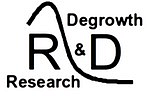 As a response to mounting concerns about the growth dilemma, the de-growth movement has developed as a protest against the all-embracing concern with material possessions. The de-growth movement want other ways to measure success. The common practice of using Gross Domestic Product, GDP, as a measure of the success of a country is therefore brought into question. GDP is just the sum of all economic transactions in a country (many of which may be very negative) and was never intended to be a measure of success. The de-growth movement want to focus on welfare, prosperity, or even happiness. See further Chapter 10c.
As a response to mounting concerns about the growth dilemma, the de-growth movement has developed as a protest against the all-embracing concern with material possessions. The de-growth movement want other ways to measure success. The common practice of using Gross Domestic Product, GDP, as a measure of the success of a country is therefore brought into question. GDP is just the sum of all economic transactions in a country (many of which may be very negative) and was never intended to be a measure of success. The de-growth movement want to focus on welfare, prosperity, or even happiness. See further Chapter 10c.
Macroeconomic modelling has been used to explore factors, which might push a capitalist market economy into a steady state, that is non-growth, but still on a high level of prosperity. It turns out that in the common economy, the state or fiscal economy has a large role. Much of the investments are directed to long-term development, such as infrastructure, rather than short-term investments, which are more typical for the private sector. Employment stays on a high level when working hours decrease. No country has tried this recipe, so we do not have practical experience, but the topic is a key point in the British report Prosperity without Growth from 2008.
Materials for session 10b
Basic level
- Read pages 37-46: The Dilemma of Growth in: Prosperity without growth.
- Read pages 29-36: Redefining Prosperity in: Prosperity without growth.
- Read pages 47-58: The Myth of Decoupling in: Prosperity without growth.
Medium level (widening)
- Investigate the character and proposals of the De-growth movement and science.
- Investigate the possibilities of Green Growth in Chapter 7, pages 67 – 74 Keynesianism and the ‘Green New Deal’ in: Prosperity without growth.
Advanced level (deepening)
- Analyse the possible roads to steady state economy in Macro-economics for Sustainability in: Prosperity without growth, pages 75 – 84.
- Management and politics of a Sustainable Economy in chapters 9 – 11 Flourishing – within limits; Governance for Prosperity; and steps towards a Sustainable Economy, in: Prosperity without growth, pages 85 – 109.
Additional material
Hamilton, J. D. 2012. Oil Prices, Exhaustible Resources, and Economic Growth (from Department of Economics, University of California, San Diego).
References
Jackson, T. 2009. Prosperity without growth: economics for a finite planet. Earthscan.
10c.
Tools for approaching a sustainable economy
How can we turn the growth-economy so that it does not cause resource destruction and environmental damage, but still contributes to the welfare of our societies and inhabitants? There are a number of economic instruments to address this question. Some of these are used by the state, the public sector, and some by the private sector.
Most important is the Ecological tax reform, also called green tax shift. This refers to the transfer of taxation on incomes (salaries) towards taxation of resource flows. The simple logic is that what is scarce has to be used carefully should be taxed, that is natural resources, while what is not limited in this sense, i.e. human work or work opportunities, should not be limited by taxation. This green tax shift has occurred in many countries, but only to a limited extent. Thus, fiscal economy relies on taxation of energy (fossil fuel, e.g. petrol for cars) carbon dioxide emissions, several metals, fertilizers etc, to some extent in several Nordic countries, Germany and the Netherlands. However, to reduce resource flows, a much more drastic reform is needed. This reform is also assumed to reduce unemployment, as taxation of salaries should be drastically reduced.
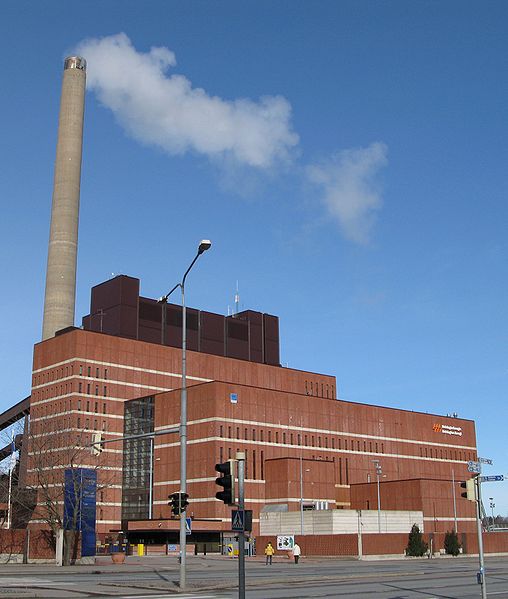
To distribute taxation and achieve environmental reforms in the most efficient way, countries have used cap-and-trade systems. This means that a number of actors are allowed to emit a specific pollutant up to a cap. To ensure incentives for companies which can lower their pollution emission, rights can be traded between themselves. Such cap-and-trade schemes have been used for different pollutant and different set of actors, especially in the United States. In Europe, the best known case is the EU system for carbon dioxide emissions trading ETS (See Session 2c). The main advantage with cap-and-trade is that emissions can be limited exactly to what the environment is able to handle. However, in reality, the cap is set to what the emitters or economy can afford.
Societies also use positive economic instruments, i.e. subsidies, to support investments promoting sustainable development. Typical subsidies are carbon funds, which are given to support transition to a fossil fuel free economy, such as insulation of houses, green cars, energy efficiency measures, etc. Business are most often reluctant to investing, even when it is profitable, why authorities in different ways try to stimulate the companies. An illustrating case is the project “Energy Efficiency in Large Companies” by the Swedish Energy Authority. 100 large companies took part, all introduced a certified energy management system, they invested a total of 708 MSEK in a total of 1247 projects; tax reductions were only 150 MSEK and annual reduction of energy costs of 400 MSEK, and return of investments thus 1.5 years.
 Many states have a strong economic policy to stimulate steps towards a greener business in the private sector. Investing in energy efficiencies, local production of energy and similar steps thus become increasingly profitable with higher prices for fossil energy, trade support better markets etc. Green technologies or green business have become a large sector in the economy of several countries and an important export market. Similarly, we see local authorities greening their cities or towns, both for economic and ethical reasons, and individual households are also in the same manner greening their lives (see further Chapter 5c).
Many states have a strong economic policy to stimulate steps towards a greener business in the private sector. Investing in energy efficiencies, local production of energy and similar steps thus become increasingly profitable with higher prices for fossil energy, trade support better markets etc. Green technologies or green business have become a large sector in the economy of several countries and an important export market. Similarly, we see local authorities greening their cities or towns, both for economic and ethical reasons, and individual households are also in the same manner greening their lives (see further Chapter 5c).
The World Business Council for Sustainable Development has become an important actor in promoting sustainable development in the private sector. WBCSD was formed immediately after the Rio Conference in 1992. It played a significant role during the Johannesburg meeting. WBCSD has stressed the concept of eco-efficiency, which "is achieved by the delivery of competitively priced goods and services that satisfy human needs and bring quality of life, while progressively reducing ecological impacts and resource intensity throughout the life-cycle to a level at least in line with the earth’s carrying capacity."
Companies as well as authorities promote themselves as green or socially responsible in several ways, as it turns out to be good for their business. Environmental reports are often made individually according to the tradition for each company or authority, but in addition there are standards for environmental or sustainability reporting. Best known is the GRI – Global Reporting Initiative – which covers the whole panorama of sustainability, economic, environmental and social, often referred to as the triple bottom line.
 Companies as well as authorities may also become certified as environmentally or socially responsible by using an internationally established management standard. The International Organization for Standardization, ISO, has developed several standards and procedures for certification. Most important for sustainability work is the Environmental Management Systems, EMS, standard ISO 14001, and the Corporate Social Responsibility, CSR, which is a guideline ISO 26000, as well as the Energy Management Standard ISO 50001. The introduction of these standards are typical for larger companies, which in turn push their delivering partners further down in the production chain to also introduce such standards.
Companies as well as authorities may also become certified as environmentally or socially responsible by using an internationally established management standard. The International Organization for Standardization, ISO, has developed several standards and procedures for certification. Most important for sustainability work is the Environmental Management Systems, EMS, standard ISO 14001, and the Corporate Social Responsibility, CSR, which is a guideline ISO 26000, as well as the Energy Management Standard ISO 50001. The introduction of these standards are typical for larger companies, which in turn push their delivering partners further down in the production chain to also introduce such standards.
Adoption of management systems, most typically EMS, is part of voluntary business agreements. There are a number of such procedures between the private sector and the authorities. Adoption of such agreements typically eases the implementation of legal requirements and permits and inspections. Regulation and introduction of a number of environmental laws, especially from the European Commission, has played an important role in the improvement of the environmental behaviour of the European private sector.
There are also important financial mechanisms to support a change into a more sustainable economy. The large investors, including pensions funds, bank etc, increasingly choose to use sustainability measures as criteria for investing. The used criteria most often include CSR and GRI. The investors see a company that have a sound environmental profile and a good CSR as a more attractive investment object than one without. The latter may end up in trouble with authorities or the society, as well as their employees where it is working. There are thus very concrete reasons for supporting companies, which may contribute to a transition towards sustainability.
Finally, one should add that the several proposals for how to manage an economy towards steady state (non-growth economy) are part of the toolbox. See Chapter 10b.
Materials for session 10c
Basic level
- Read Environmental Management, Book 1, Chapter 11, pages 158-159: Sustainable Development and the Concept of an Ecological Tax Reform.
- Read A Sustainable Baltic Region, Session 8, Chapter 7, pages 43-46: Ecological Tax Reform by Svante Axelsson.
- Read Environmental Management, Book 1, Chapter 11, pages 149-158: Market-based Economic Instruments – Emission Trading.
- Read Environmental Management, Book 1, Chapter 4, pages 65-76: Self-regulation and Voluntary Corporate Initiatives
Medium level (widening)
- Study the role of European Union regulations in Environmental Management, Book 1, Chapter 2: Development of EU Environmental Regulation
- Read Environmental Management, Book 1, Chapter 10, pages 137-148: Economic Policy Instruments – Taxes and Fees
- Study the policies and roles of World Business Council for Sustainable Development.
Advanced level (deepening)
- Examine critically the concept of Green Growth, e.g. see:
Green Business
Green Growth in Asia and the Pacific - Learn about sustainability reporting at Global Reporting
References
Klemmensen, B., Pedersen, S., Dirckinck-Holmfeld, K. R., Marklund, A. and L. Rydén. 2007. Environmental Policy: Legal and Economic Instruments. Book 1 in a series on Environmental Management. Baltic University Press. Uppsala.
Zyclicz, T. (ed.). 1997. Ecological Economics – Markets, prices and budgets in a sustainable society. A Sustainable Baltic Region. Session 8. Baltic University Press. Uppsala.
BUP Sustainable Development Course
